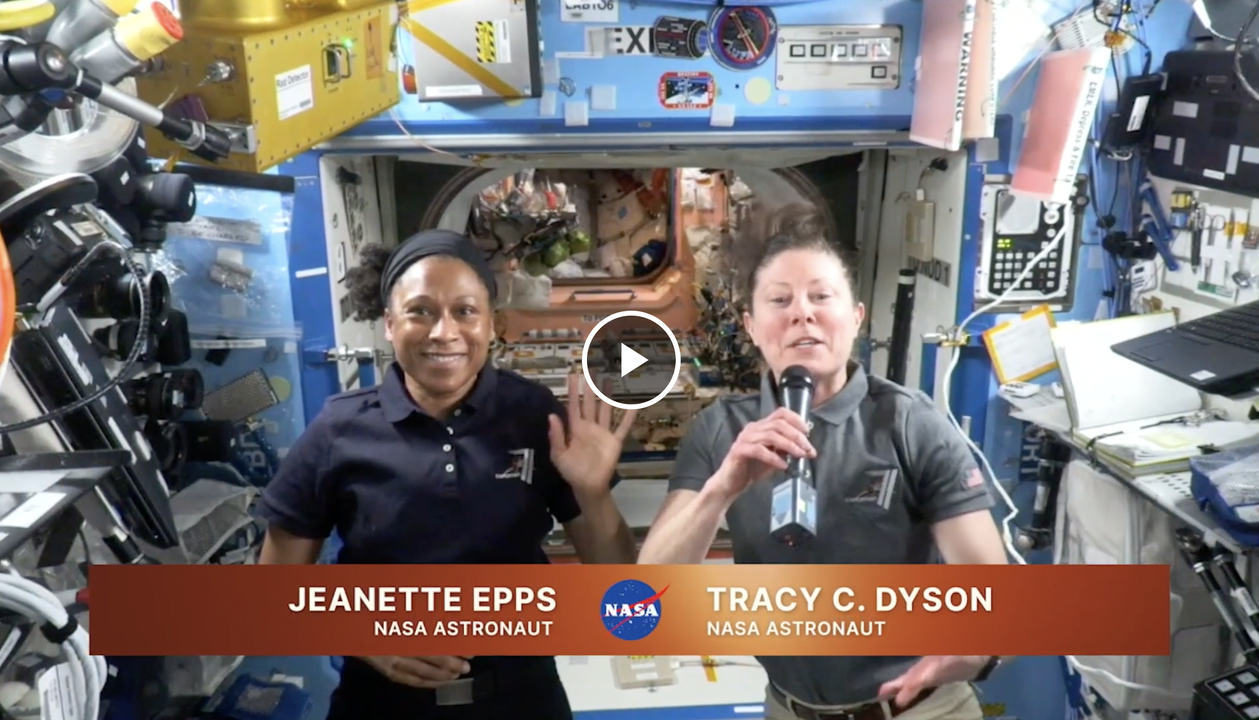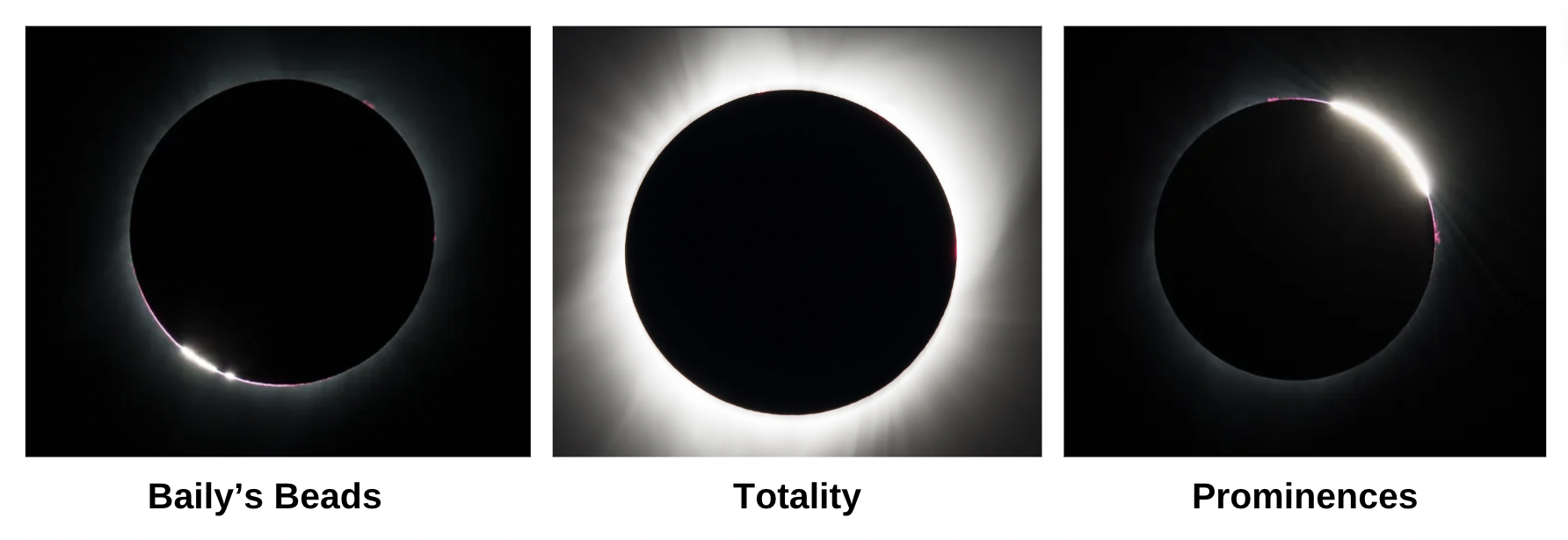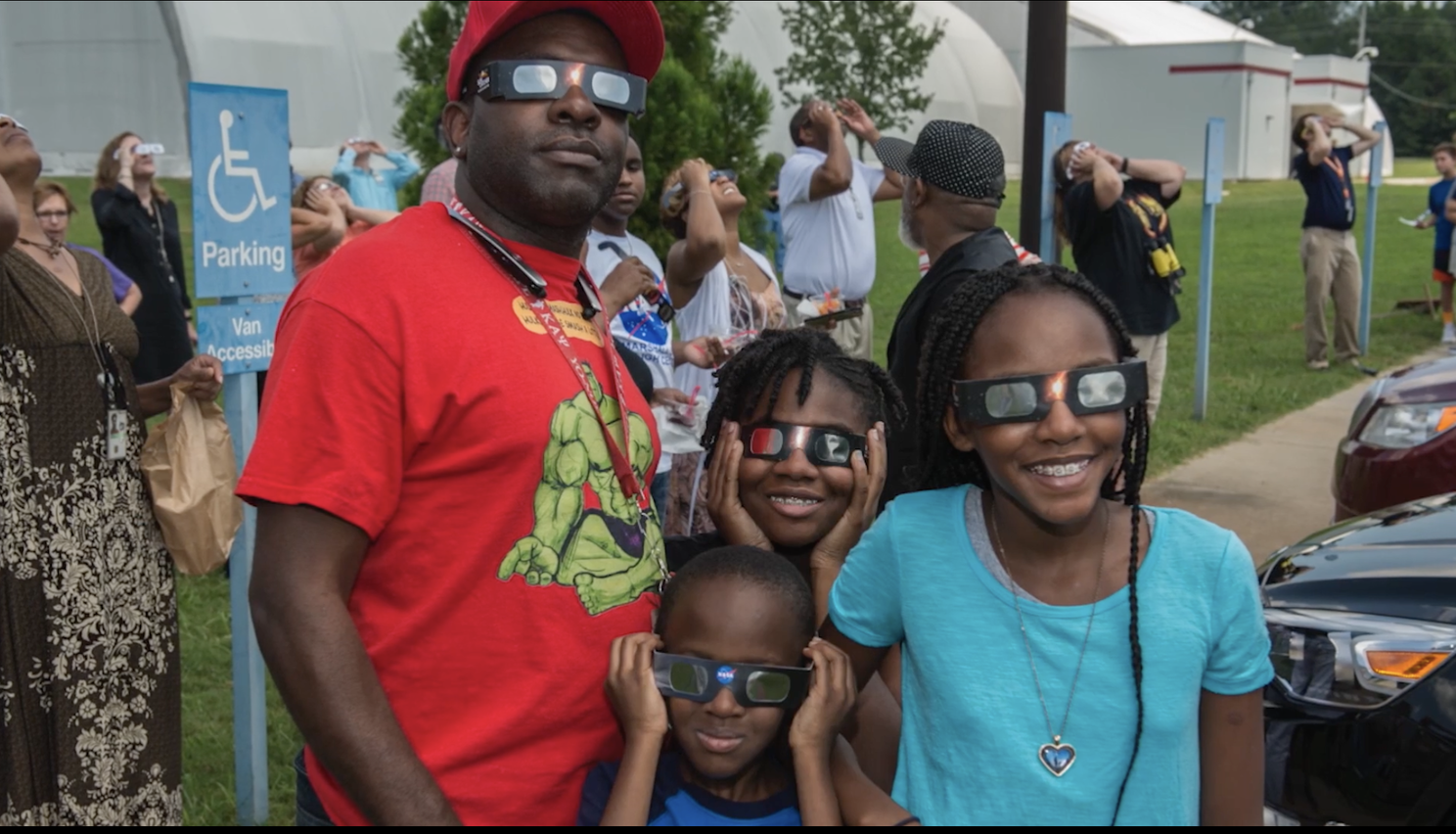Everything Under the Sun You Need to Know About Today’s Eclipse…From Epic Women in Our Orbit
It’s today!
As a member and Chair-Elect of the International Space Station Education Outreach Subcommittee and a mentor connector for girls who love STEM, today’s total solar eclipse is monumental. What time will it start? I’ll be at my desk all day – how can I watch it live? Why is this eclipse so special? What do I look for? What else should I know?
With questions like these coming in fast from students, parents, teachers, and cool aunts everywhere, here is a fast list of tips and viewing tricks you need to know, straight from women in space…two of them literally in space as they speak to us from aboard the International Space Station 265 miles above the Earth.
Stop it – they filmed a video in space?
Yep! Hear from NASA astronauts Jeanette Epps and Tracy C. Dyson, who recorded this video just days ago from the ISS:
Amazing! If I can be outside, what will I see from where I am right now?
Input your zip code into this interactive map from NASA to learn what will be visible in different areas and compare your view to the last eclipse!
Okay, schools have organized safe viewing and millions will be outside watching along the path, but I’ll be at my desk all day - how can I still watch the eclipse?
NASA has you covered. Follow along all day LIVE with NASA experts as they broadcast today’s eclipse with streaming feeds across the path of totality:
What time does everything start today?
NASA’s live coverage starts at 1pm ET today and, weather permitting, the basic path of totality across the US is set out below.
To know exactly what time to step outside where you are, input your location here and set your watch.
What should I expect to see and feel?
From a dramatic temperature drop to darkening skies, Baily’s Beads visible around the moon, the Diamond Ring and pink features called Prominences, the images and emotions you can expect to feel are stunning. Click here for a detailed explanation about what to expect.
What do I need to know about safety while watching today’s eclipse?
The glasses thing is not a joke – serious eye injury can result from viewing any part of a solar eclipse without officially approved viewing glasses or a handheld solar viewer. Safe solar viewers should comply with ISO 12312-2 standards and should bear the stamp ISO; if you don’t have a pair check here for approved tips on how to create a safe indirect viewer.
I have younger kids - what’s an engaging way to explain the eclipse to them today?
Storytime in Space read aloud by astronauts aboard the ISS has a fantastic video called Totality, perfect for a wide range of ages. Watch it here.
What do other women in our orbit who work in space want us to know today as we turn our eyes skyward?
"'The Sun is simultaneously 400 times larger in diameter than the Moon, and 400 times farther away from the Earth than the Moon, so they cover almost exactly the same size patch of sky as viewed from our planet.' Dr. Charles Liu said this on a recent podcast and I think it's pretty cool." - Retired NASA Astronaut Cady Coleman, PhD
"It will be 20 years until the next eclipse after April 8th in the US, however the next decade has other eclipses around the globe. August 12, 2026 over Greenland, Iceland and Spain; August 2, 2027 over northern Africa, Gibraltar and the Saudi peninsula; and July 22, 2028 over Australia and New Zealand!" - NASA Next Gen STEM ISS Lead Samantha Thorstensen
"Be in the moment...Be fully engaged when the eclipse actually happens." - Astronaut and Payload Specialist, Galactic 05 mission / Virgin Galactic Kellie Gerardi
The last one keeps ringing in my head: Be in the moment.
Take a minute today, when you feel the temperature drop and the sky starts to darken, to put the phone down and be present.
Listen for the quiet and then hear the gasps around you. Make a mental note of what you see through your glasses as the sun and moon put on a show.
The next eclipse we’ll see like this in the US will be in 2044, but we’re here right now experiencing this phenomenon together with necks craned to the stars.
It’s today.
Looking forward…and up,
Illana
All images courtesy of the ISS National Lab and NASA / Aubrey Gemignani and Natchimithuk Gopalswamy
ÊXTRAS: If you’re following the eclipse on social media today, here are (more than) 3 links you won’t want to miss: NASA Sun and Space on X, ISS National Lab and NASA Solar System on Instagram and NASA on Snapchat.









